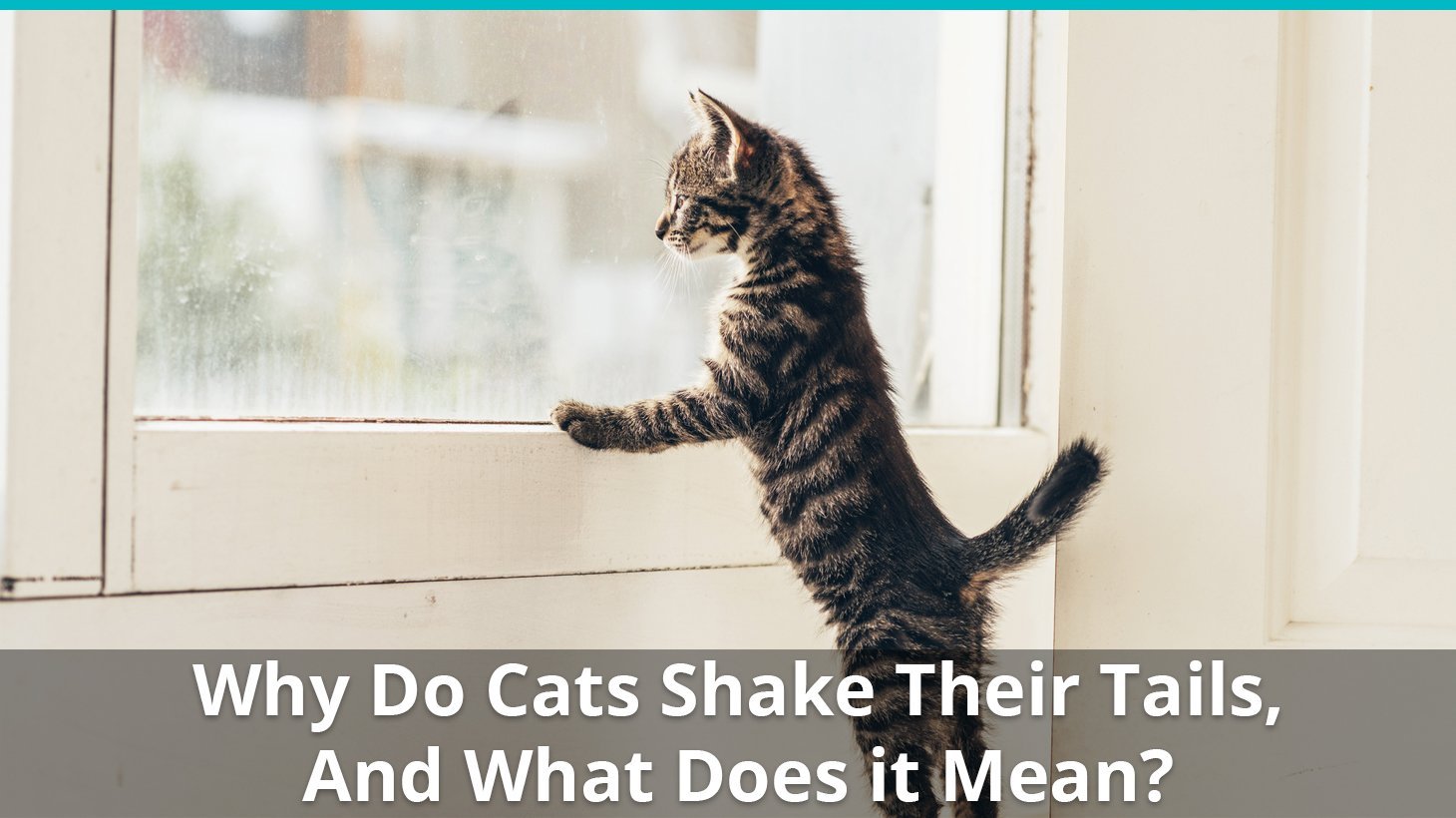Understanding a cat’s mood and needs can prove difficult, even for experienced pet parents. Cats communicate mainly through body language or vocalization.
But even if your pet kitty doesn’t have a problem with speaking its mind through meows, yowls, and chirps, the fact that you don’t speak meow makes communication hard. So all that’s left for you to try and do is monitor your beloved furball to read its body language.
The tail position is one of the most expressive aspects of the feline body language. Unless you own a bob-tailed breed like the Highlander or the Pixie-Bob, you can learn a lot just from how your cat moves or positions its tail in various situations.
Out of the many ways a cat can move its tail, a particularly interesting movement is shaking or vibrating (not to be confused with wagging).
When cats shake their tails, they express a variety of emotions. The shaking/ vibrating can affect the entire tail or its tip. It usually occurs when the tail faces upwards or is slightly bent at the tip.
So What Does It Mean When Your Cat Is Shaking Its Tail And Why Do They Do It?
Depending on the situation and the cat’s surroundings, it can either give off positive or negative emotions. Here are the basic feelings a cat with a shaking/ vibrating tail is experiencing.
Anxiety And Restlessness
When the upper part of your fluffy friend’s tail vibrates or shakes, your kitty is anxious about something. The restless mood can be triggered by numerous things – even something as simple as being unable to find its favorite cat toy.
Cats have enviably heightened senses, and as such, they can actually sense things we, human beings, would completely miss. So, your kitty’s anxiety could result from a noise you didn’t hear or some odor you can’t smell.
A cat residing in a house or apartment with a noisy family can develop chronic anxiety. Moreover, it can also start developing a number of health disorders caused by stress, such as skin problems. Some cats like big families and noisy environments, but others aren’t that laid-back.
If your pet’s upper tail is vibrating and she’s anxious on a daily basis, you should try making the kitty’s room quieter and more comfortable.
Anger And Annoyance
Cats can get annoyed by basically everything. The easiest way to anger your beloved furball is to not pay enough attention to it or to go to the other extreme and not give it any space.
If your cat is shaking or vibrating its tail during long play sessions, it’s time to leave it alone. Trying too hard to make it perform tricks or hugging/ squeezing/ petting it too much will ultimately irritate your kitty. You should be looking out for tail shaking when house guests or children are trying to play with the cat. Putting a timely stop to their attempts to bond with your pet can prevent aggressive behavior on the cat’s behalf. Best-case scenario – the cat will run away. Worst-case scenario – an accident could occur.
As the cat’s annoyance escalates, the vibrating will transform into rapid tail whipping. Should the feline’s tail or the fur on the rest of its body bristle, you must allow it some time to calm down.
Happiness And Excitement
In most cases, the shaking tail is a sign of negative emotions, but there are exceptions to every rule. In other words, it’s also possible for your cat to be happy or excited when its tail is vibrating.
This can occur if you own a dog-like loyal cat that comes to greet you whenever you arrive home. The upright tail with a vibrating tip is a clear sign of excitement, whether a human, animal, or inanimate object is causing it.
You might spot your pet performing this tail movement whenever it’s sitting on the window perch while monitoring something outside.
Another common situation in which the shaking tail indicates excitement is when you open a new can of cat food just as your pet is hurrying towards its food bowl.
I remember my grandmother’s cat used to stand in the kitchen and vibrate her tail whenever her little package of treats was brought out.
Your pet kitty’s hyperactive tail is the most expressive fragment of its body language.
Other expressive aspects include its ears, eyes, and overall sitting/ standing/ lying positions. Regardless of the situation, monitoring your precious furball’s body language is important. Learning how to decipher it will help you understand your cat’s emotions, needs, and possible reactions to its surroundings.


My cat does this when she wants me to pet her. Strangely, though, she only does this when next to the bed or the shower. That makes me think it is territorial. Cats vibrate their tails in that exact same way when marking with urine.
Gracie fans her tail against my leg when I am sitting on the tollet.why does she do that?
When in nature, animals are vulnerable when going to the bathroom. My cat also does this when I’m in the bathroom, on the toilet. I believe it is a protective practice to help keep prey away while I’m vulnerable. Most animals in nature use body “language” to distract, confuse, scare, or camouflage as something other than what it is. I thought perhaps it’s making itself look like an agitated snake dancing or something. This cat’s mom was a stray and these are the only cats out of many that I’ve had through the years that do this with their tail. I truly believe he is trying to protect me! Thanks